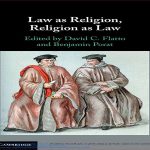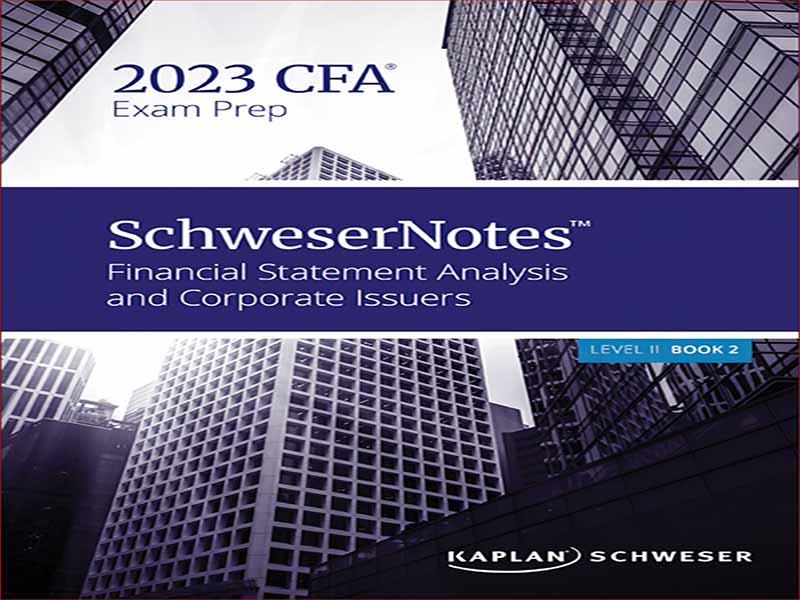- عنوان کتاب: Financial Statement Analysis and Corporate Issuers
- نویسنده/انتشارات: SchweserNotes
- حوزه: تحلیل صورتهای مالی
- سال انتشار: 2022
- تعداد صفحه: 273
- زبان اصلی: انگلیسی
- نوع فایل: pdf
- حجم فایل: 6.97 مگابایت
سرمایهگذاریهای بینشرکتی در اوراق بهادار قابل بازار به عنوان (1) سرمایهگذاری در داراییهای مالی (زمانی که شرکت سرمایهگذار کنترل قابلتوجهی بر عملیات شرکت سرمایهپذیر ندارد)، (2) سرمایهگذاری در شرکتهای وابسته (زمانی که شرکت سرمایهگذار تأثیر قابلتوجهی بر روی سهام دارد) طبقهبندی میشود. عملیات شرکت سرمایهپذیر، اما نه کنترل)، یا (3) ترکیب تجاری (زمانی که شرکت سرمایهگذار بر عملیات شرکت سرمایهپذیر کنترل دارد). درصد مالکیت (یا کنترل رأی) معمولاً برای تعیین دسته مناسب برای اهداف گزارشگری مالی استفاده می شود. با این حال، درصد مالکیت تنها یک دستورالعمل است. در نهایت، این دسته بر اساس توانایی سرمایه گذار برای تأثیرگذاری یا کنترل بر سرمایه پذیر است. سرمایه گذاری در دارایی های مالی سود مالکیت کمتر از 20٪ معمولاً یک سرمایه گذاری غیرفعال در نظر گرفته می شود. در این حالت، سرمایه گذار نمی تواند به طور قابل توجهی بر سرمایه پذیر تأثیر یا کنترل کند. سرمایه گذاری در شرکت های وابسته سود مالکیت بین 20 تا 50 درصد معمولاً یک سرمایه گذاری غیر کنترلی است. با این حال، سرمایه گذار معمولاً می تواند به طور قابل توجهی بر عملیات تجاری سرمایه پذیر تأثیر بگذارد. تأثیر قابل توجهی را می توان با موارد زیر نشان داد: نمایندگی هیئت مدیره. مشارکت در سیاست گذاری معاملات بین شرکتی با اهمیت تبادل پرسنل مدیریتی وابستگی به تکنولوژی ممکن است با مالکیت کمتر از 20٪ نفوذ قابل توجهی داشته باشید. در این صورت سرمایه گذاری سرمایه گذاری در شرکت های وابسته محسوب می شود. در مقابل، بدون تأثیر قابل توجه، بهره مالکانه بین 20 تا 50 درصد سرمایه گذاری در دارایی های مالی تلقی می شود. از روش حقوق صاحبان سهام برای حسابداری سرمایه گذاری در واحدهای وابسته استفاده می شود. ترکیبات تجاری سود مالکیت بیش از 50٪ معمولاً یک سرمایه گذاری کنترل کننده است. زمانی که سرمایه گذار بتواند سرمایه پذیر را کنترل کند، از روش اکتساب استفاده می شود. ممکن است بیش از 50 درصد سرمایهپذیر را در اختیار داشته باشید و کنترل نداشته باشید. به عنوان مثال، کنترل می تواند موقتی باشد یا موانعی مانند ورشکستگی یا مداخله دولت وجود داشته باشد. در این موارد سرمایه گذاری کنترلی تلقی نمی شود. برعکس، کنترل با بهره مالکیت کمتر از 50 درصد امکان پذیر است. در این مورد، سرمایه گذاری همچنان یک ترکیب تجاری در نظر گرفته می شود. سرمایه گذاری مشترک. سرمایه گذاری مشترک واحدی است که به موجب آن کنترل بین دو یا چند سرمایه گذار به اشتراک گذاشته می شود. هر دو IFRS و GAAP ایالات متحده به روش ارزش ویژه برای سرمایه گذاری مشترک نیاز دارند. در موارد نادر، IFRS و GAAP ایالات متحده اجازه ادغام متناسب را برخلاف روش ارزش ویژه می دهند.
Intercorporate investments in marketable securities are categorized as either (1) investments in financial assets (when the investing firm has no significant control over the operations of the investee firm), (2) investments in associates (when the investing firm has significant influence over the operations of the investee firm, but not control), or (3) business combinations (when the investing firm has control over the operations of the investee firm). Percentage of ownership (or voting control) is typically used to determine the appropriate category for financial reporting purposes. However, the ownership percentage is only a guideline. Ultimately, the category is based on the investor’s ability to influence or control the investee. Investments in financial assets. An ownership interest of less than 20% is usually considered a passive investment. In this case, the investor cannot significantly influence or control the investee. Investments in associates. An ownership interest between 20% and 50% is typically a noncontrolling investment; however, the investor can usually significantly influence the investee’s business operations. Significant influence can be evidenced by the following: Board of directors representation. Involvement in policy making. Material intercompany transactions. Interchange of managerial personnel. Dependence on technology. It may be possible to have significant influence with less than 20% ownership. In this case, the investment is considered an investment in associates. Conversely, without significant influence, an ownership interest between 20% and 50% is considered an investment in financial assets. The equity method is used to account for investments in associates. Business combinations. An ownership interest of more than 50% is usually a controlling investment. When the investor can control the investee, the acquisition method is used. It is possible to own more than 50% of an investee and not have control. For example, control can be temporary or barriers may exist such as bankruptcy or governmental intervention. In these cases, the investment is not considered controlling. Conversely, it is possible to control with less than a 50% ownership interest. In this case, the investment is still considered a business combination. Joint ventures. A joint venture is an entity whereby control is shared by two or more investors. Both IFRS and U.S. GAAP require the equity method for joint ventures. In rare cases, IFRS and U.S. GAAP allow proportionate consolidation as opposed to the equity method.
این کتاب را میتوانید از لینک زیر بصورت رایگان دانلود کنید:
Download: Financial Statement Analysis and Corporate Issuers

































نظرات کاربران